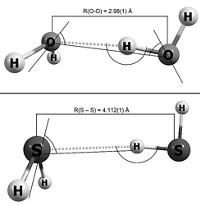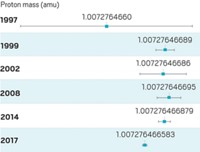Advertisement
Grab your lab coat. Let's get started
Welcome!
Welcome!
Create an account below to get 6 C&EN articles per month, receive newsletters and more - all free.
It seems this is your first time logging in online. Please enter the following information to continue.
As an ACS member you automatically get access to this site. All we need is few more details to create your reading experience.
Not you? Sign in with a different account.
Not you? Sign in with a different account.
ERROR 1
ERROR 1
ERROR 2
ERROR 2
ERROR 2
ERROR 2
ERROR 2
Password and Confirm password must match.
If you have an ACS member number, please enter it here so we can link this account to your membership. (optional)
ERROR 2
ACS values your privacy. By submitting your information, you are gaining access to C&EN and subscribing to our weekly newsletter. We use the information you provide to make your reading experience better, and we will never sell your data to third party members.
Physical Chemistry
Tunneling From A Deeper Source
Quantum Effects: Electrons penetrate energy barriers from lower orbitals than realized
by Jyllian N. Kemsley
September 14, 2009
| A version of this story appeared in
Volume 87, Issue 37

Electrons can tunnel out of orbitals at a lower energy level than previously realized, reports an international group of researchers led by Paul B. Corkum of the University of Ottawa and Canada’s National Research Council (Science 2009, 325, 1364).
Quantum mechanical tunneling occurs when an atomic particle with insufficient energy to go over an energy barrier penetrates it nevertheless.
In the case of an electron tunneling out of a molecule, scientists have traditionally believed that the electron emerges only from the highest occupied molecular orbital (HOMO). Corkum’s group now finds that’s not necessarily so.
Previous studies have suggested that tunneling can have contributions from orbitals at lower energy than the HOMO, notes Robert R. Lucchese of Texas A&M University. The new work gives direct experimental evidence that lower-energy orbitals may participate significantly.
Corkum and colleagues used HCl for their experiments because of key differences between the molecule’s HOMO and the orbital one rung below, HOMO–1. The HOMO of HCl is a lone-pair 3p orbital of the Cl atom and isn’t involved in bonding. In contrast, HCl’s HOMO–1 forms from the overlap of the H 1s and Cl 3p orbitals and accounts for the molecular bond.
Consequently, when an electron tunnels out of HOMO–1, the bond weakens and the molecule fragments. The researchers used intense laser pulses to induce tunneling and then watched for HCl to break apart.
They found that the overall probability for an electron to come from HOMO–1 is a mere 0.2%, but if an electron is removed specifically along the molecular axis, away from the H atom, the probability is at least 10%.
The researchers expect that tunneling from lower-energy orbitals should be more prevalent in molecules larger than HCl. In such molecules, the energy difference between the HOMO and lower-lying orbitals is generally smaller than that for HCl and would favor lower-energy tunneling. Directional effects would depend on the exact orbitals and their ionization potentials, Corkum says.





Join the conversation
Contact the reporter
Submit a Letter to the Editor for publication
Engage with us on Twitter